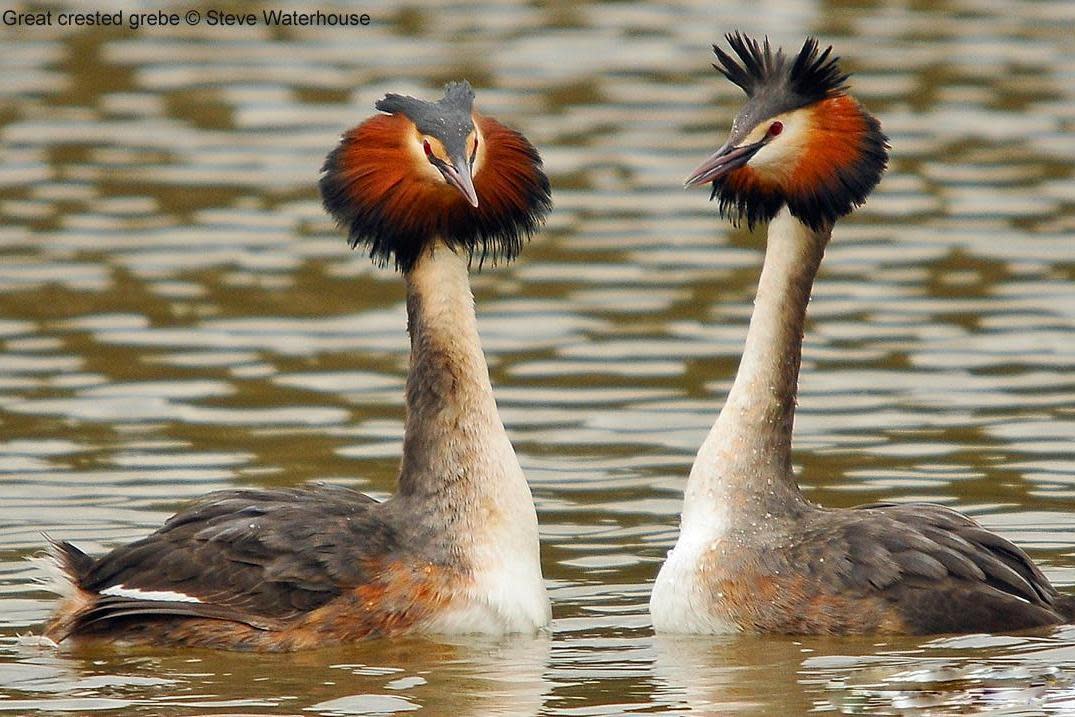ES Views: Wild London: Crested grebes are a wonder to behold

Looking good can be dangerous when you are a beautiful bird. The great crested grebe, hunted for its stunning feathers, was pretty much extinct across London and the rest of the country 100 years ago. But now they are back and strutting their stuff across our lakes, reservoirs and gravel pits.
March is the best time to enjoy these elegant water birds. With white and chestnut Angle-poise-type heads, tipped with a spiky crest of soot-back feathers, they perform astonishing pirouettes on the water.
Males and females face each other, dancing in close symmetry, swaying their necks, shaking heads and touching bills. There are usually four ceremonies in each dance routine, including a pas de deux in which both rise up from the water’s surface, paddling furiously with their webbed feet, chests together and necks held high as they present each other with tempting gifts of pond weed, sticks and other nesting material.
Another dance sees one bird dive and emerge with neck extended, head bowed towards its partner and upper chest exposed to show off an ice-white underbelly. It’s as if they are acutely aware of how their plumage can excite their partner.
Thankfully, due to protective laws and more enlightened attitudes — as well as the flooding of gravel pits on the city’s edges in the Sixties and Seventies — their numbers have recovered and they can be seen across the capital.
Keep an eye open for them if you are strolling next to the lakes in Regent’s Park, Hyde Park or Richmond Park, or visit the wildlife-rich waterways and reservoirs of the Lea or Colne valleys.
As Sir David Attenborough declared at the opening of Woodberry Wetlands last year, the great crested grebe is “as beautiful as any bird of paradise” and, more importantly, they can be seen here in London.
The London Wildlife Trust campaigns to protect the capital's wildlife and wild spaces. It is backed by Sir David Attenborough, president emeritus of The Wildlife Trusts.

 Yahoo News
Yahoo News 
